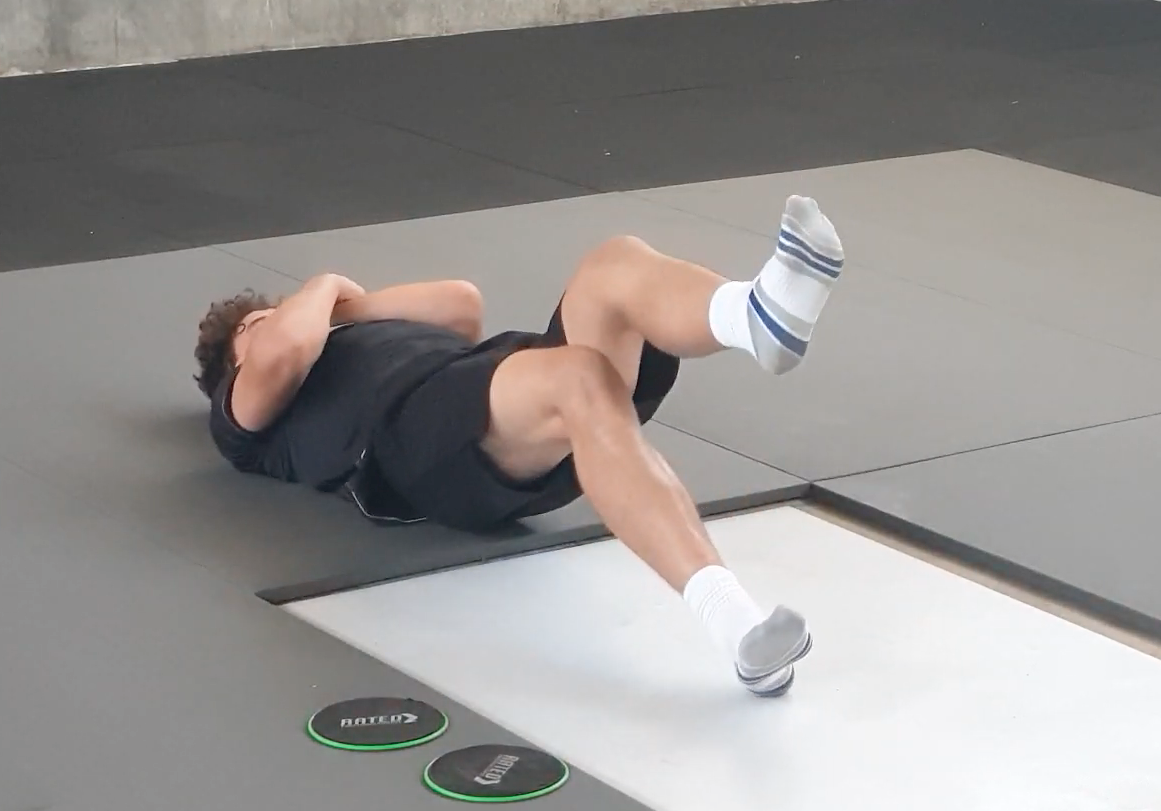Training at home with no equipment
The easiest way to separate the body into segments and ensure that segment by segment, movement by movement, the body acts in all the ways it needs to.
In this case, the separation could occur any number of ways, but is most sensibly done by many trainers as joint by joint. Let’s work from floor to ceiling as discover some ways our body can move.
Ankle Dominant
Calf Raises– These are best done on a step to increase range of movement, and with a pause at the top and bottom. They can also be done with a straight leg and bent leg for more variety and to stress different muscles. Harder variations involve going up with two and down on one leg, or simply doing them with one leg (but ensure full range with pauses first and foremost).
Tibialis Raises– These are best done in high repetitions as it is very hard to find great range of motion. Vary the amount of lean in your upper body to vary intensity.
Knee and Hip Dominant
Quad Focused
Squats: These are best done with elevated heels relative to toes, maintaining full control in the bottom position is key. Pausing at the bottom or extended holds at the bottom are good ways to practice this. Practicing full range (do not worry about knees going over toes, this is an old myth I assure you) with good control will force you to work very hard.
Split Squats: These can be done many ways- feet at level heights, front foot higher than back foot (creates more range for front knee) or back foot higher than front foot (more range to sit into and more stretch on the back thigh). Main points to remember is that in all variations the front foot is taking the majority of the load, and the back foot acts as light balance and support and should not be heavy.
Natural Leg Extensions: These will train your legs in a different way to squats and are a great source of mobility for the back as well. Important to keep your hips forward, especially when as leant back as you can be. A straight bodyline means more leg work and a more curved back means more mobility for the spine.
Hamstring/Glute Focused
Slider Curls: These are great for training hamstrings but can be quite challenging. Variations include holds in one position (easiest), two legged, two up and one leg down, and one leg. Main point here is to keep hips extended (no bend in the hips) throughout the movement, as best you can.
Hip Thrusts: These are a good exercise for glutes and adductors. It is important to keep the knees lightly spreading away from one another in the movement and is best performed with pauses at the top. Variations include two legged, two up and one leg down, single legged and 1 ¼.
Razor Curls: These can be done if you have a place to fix your feet under, like a couch with a helpful partner sitting on it. Important with these to move slowly and focus on where the hips are relative to the knees. The further forward the hips are past the knees, the more challenging it is.
Core
A general note before starting this section. The exercises you will see here are different to the usual as the core tends to be most useful when it resists movement (think a tight core that doesn’t move when lifting a heavy box). For this reason I will focus on exercises that strengthen you in this way.
Hollowbody: This is a great way to practice keep the front of your core tight when gravity wants to pull you apart. It is made harder by lengthening the arms and legs away from the belly button. Two key focus points are keeping the ribs and the hips pulling towards one another and pushing the belly button into the floor so that the back stays grounded at all times.
Isometric Twist: This is an awesome way to ensure you don’t have your back twisted or moved out of a tense shape during everyday life. This can be made harder by also holding something heavy in your hands as you attempt to twist into the door frame.
Supermans: This is a great way to keep your back extended and useful to get a more open chest posture if you regularly work at a desk. Can be made harder by holding light weights in the hands as hold times get longer.
Upper Body
Pushing Focus
Push Up: A staple all know about for good reason. It is important to ensure you always touch your chest to the floor/object in question and lock elbows out to ensure full range of motion is strengthened. This is made easier by being more upright and doing push ups to elevated surfaces like chairs or in door frames and made harder by adding a weighted backpack or elevating your hands so you must travel more distance.
Bodyweight Skullcrusher: Great for triceps development and an important accessory to push ups. Is made easier and harder in the same ways. Ensure to keep elbows tucked close to ribcage.
Pulling Focus
Reverse Plank: Great for developing more stable shoulders and opening up better posture. Can be made easier by being more upright and becoming harder by getting more horizontal or elevating feet.
Sheet Rows: You will need a potentially sacrifice-able sheet for this. Tie a knot in it and close it on the other side of a sturdy door. With the sheet hanging out in front of you, loop it around your hands, walk your feet towards the door so you are leaning back and taking weight in your hands. Keeping the hips extended, pull yourself towards the door and return to starting position. Can be made harder by slowing tempo or using one hand only.
Happiness and Health,
Joel Mullen
